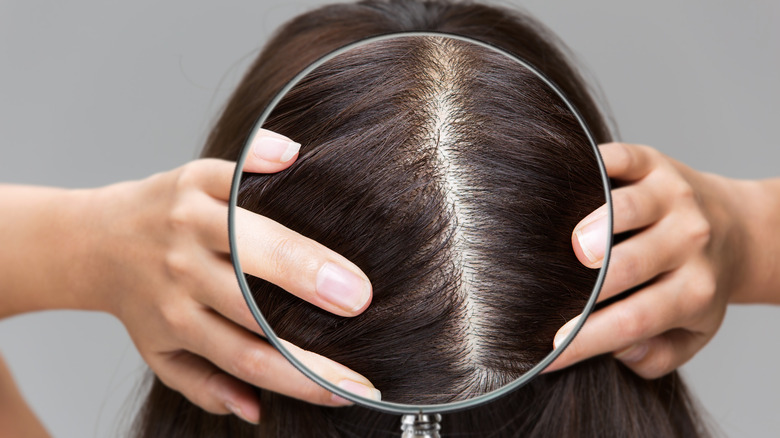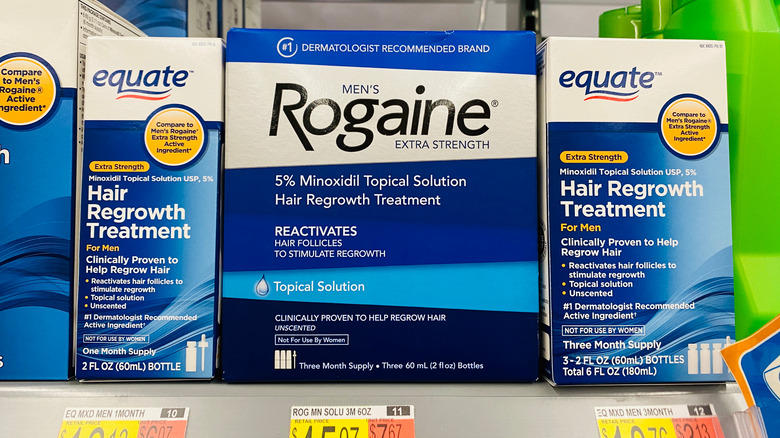How To Tell If You're Starting To Go Bald
As defined by the Mayo Clinic, "Baldness typically refers to excessive hair loss from your scalp." Also known as alopecia, baldness is most commonly a result of heredity and can occur quickly, or over time, and may include other areas of your body beyond your scalp.
If you are losing your hair, this doesn't necessarily mean that you're starting to go bald. It is natural to lose between 50 to 100 hairs a day, and, under normal conditions, new hair will be growing at the same time, However, there are certain signs to look out for to determine whether or not your hair loss is indeed the kind leading to permanent baldness.
According to the Mayo Clinic, the most common indication that you're starting to go bald is a gradual thinning of the hair at the top of the head. This kind of hair loss typically occurs as a result of age. Men who are starting to bald will see the hair receding in the front of the scalp, while women will typically notice a widening of the part in their hair, although a receding hairline in older women, also called frontal fibrosing alopecia, is not uncommon.
Other signs that you're starting to go bald
According to Healthline, there are other reasons you may be going bald that are unrelated to heredity or aging.
One of these conditions, telogen effluvium, is reversible balding that results from a stressful event such as a hospitalization or a reaction to a new medication. Another possible reason you may be going bald is due to a fungal infection of the scalp called tinea capitis. This is a condition that can also result in scarring. Another cause for balding, though rare, could be due to severe nutritional deficiency. If you are starting to go bald, this could also be an indication that you have a thyroid condition.
Unfortunately, it is highly unlikely that you will be able to regrow hair in areas where you've started to go bald. Depending on the nature of your hair loss, however, there are options available to prevent or slow down further hair loss, or manage the situation cosmetically. One of these options includes the over-the-counter scalp treatment, commonly known as Rogaine. For women, a prescription medication called Aldactone may help prevent the kind of hormone imbalances that cause balding. Other possibilities to mitigate balding include laser light therapy, other kinds of prescription medications, and a process that involves injecting your platelet-rich plasma into your scalp as a way to rejuvenate hair growth (via Healthline).
Balding is typically a natural part of life as you age. However, if you are experiencing sudden hair loss along with any pain, or other unexpected discomforts, see your doctor to determine if this is the result of any underlying medical issues.


